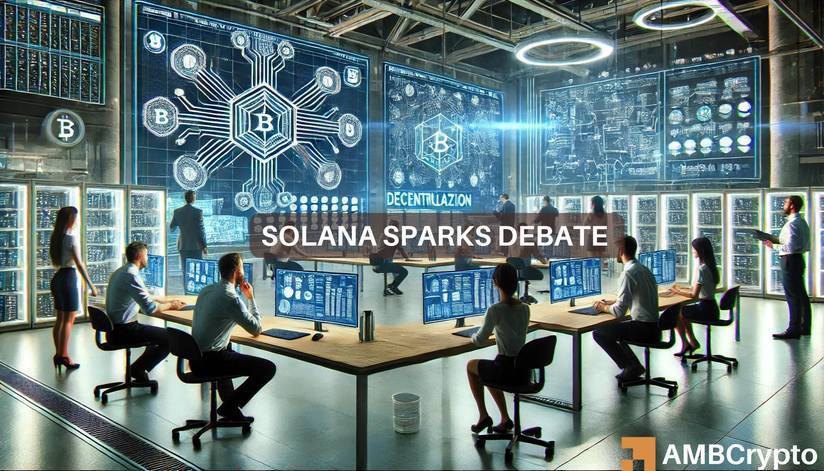Recently, there has been a surge in discussions surrounding Solana [SOL] and its level of decentralization, triggered by remarks made by former NSA contractor and whistleblower, Edward Snowden.
During his appearance at the Token2049 conference held in Singapore, Snowden criticized Solana for concentrating on centralization to enhance efficiency while harboring memecoins and fraudulent schemes.
“However, hardly anyone is utilizing it, apart from memecoins and scams. If any significant entity adopts it, then regulations swiftly come into play.”
Expanding on his comments, Snowden emphasized the need to anticipate adversarial scenarios in relation to Solana’s structure, rather than just focusing on the straightforward and convenient aspects.
Varied Opinions on Solana’s Decentralization Status
Several prominent figures within the Ethereum community concurred with the notion that Solana exhibits elements of centralization. Ryan Berkmans, in particular, supported Snowden’s statement, highlighting the network’s validator client and the high expenses involved in running a validator node.
“Verdict: Mostly Accurate. SOL requires 10GBit/s for upload, which less than 1% possesses. It primarily functions as a data center chain. Unlike Ethereum, Solana lacks diverse clients, serving more as an application than a protocol. Validators incur substantial costs for voting, with an approximate breakeven point of $1.2M in around 2.5 years. Clearly centralized!”
While the validator execution client and geographical node distribution are key indicators of blockchain decentralization, they are not the sole determinants. Currently, Solana operates on Agave as its validator execution client, facing criticisms for being a single point of failure compared to Ethereum’s six variants.
Mert Mumtaz, the CEO of Helius Labs focusing on SOL, mentioned the presence of three clients on the platform.
“SOL accommodates multiple clients – Frankendancer, Jito, and Firedancer on mainnet, with Sig and Mythril (a validating client) on the horizon.”
Anatoly Yakovenko, a co-founder of Solana, aligned with this perspective but specified that there are only two operational clients.
“Firedancer is operational on the mainnet, although not yet involved in voting or block production by choice. Nonetheless, it fully validates all state transitions. Currently, there are officially two clients.”
Contrarily, David Hoffman from Bankless opposed Yakovenko’s stance, highlighting the founder’s recent announcement that Agave would be a backup, not part of a multi-client setup alongside Firedancer.
“The initial plan indicated Firedancer as the primary client, with the previous client serving as a backup. It differs from a robust multi-client network setup.”
Examining the geographical spread of nodes, Chris Remus from Chainflow PoS observed that SOL’s distribution pattern mirrored that of other chains, with concentrations in the U.S. and Europe, and partially in Asia.
At the time of writing, SOL was valued at $141, registering a 5% decrease over the past week of trading.

